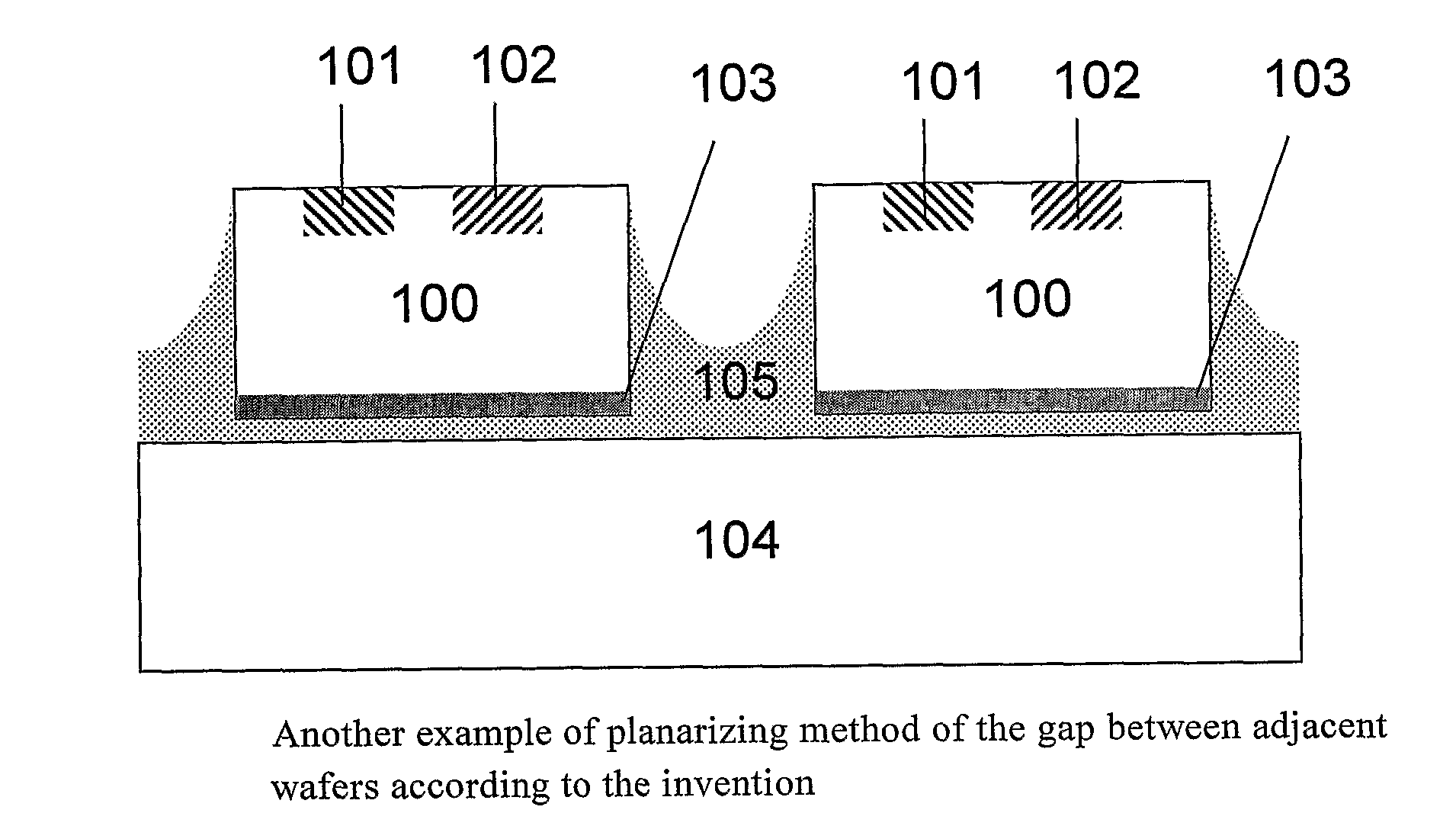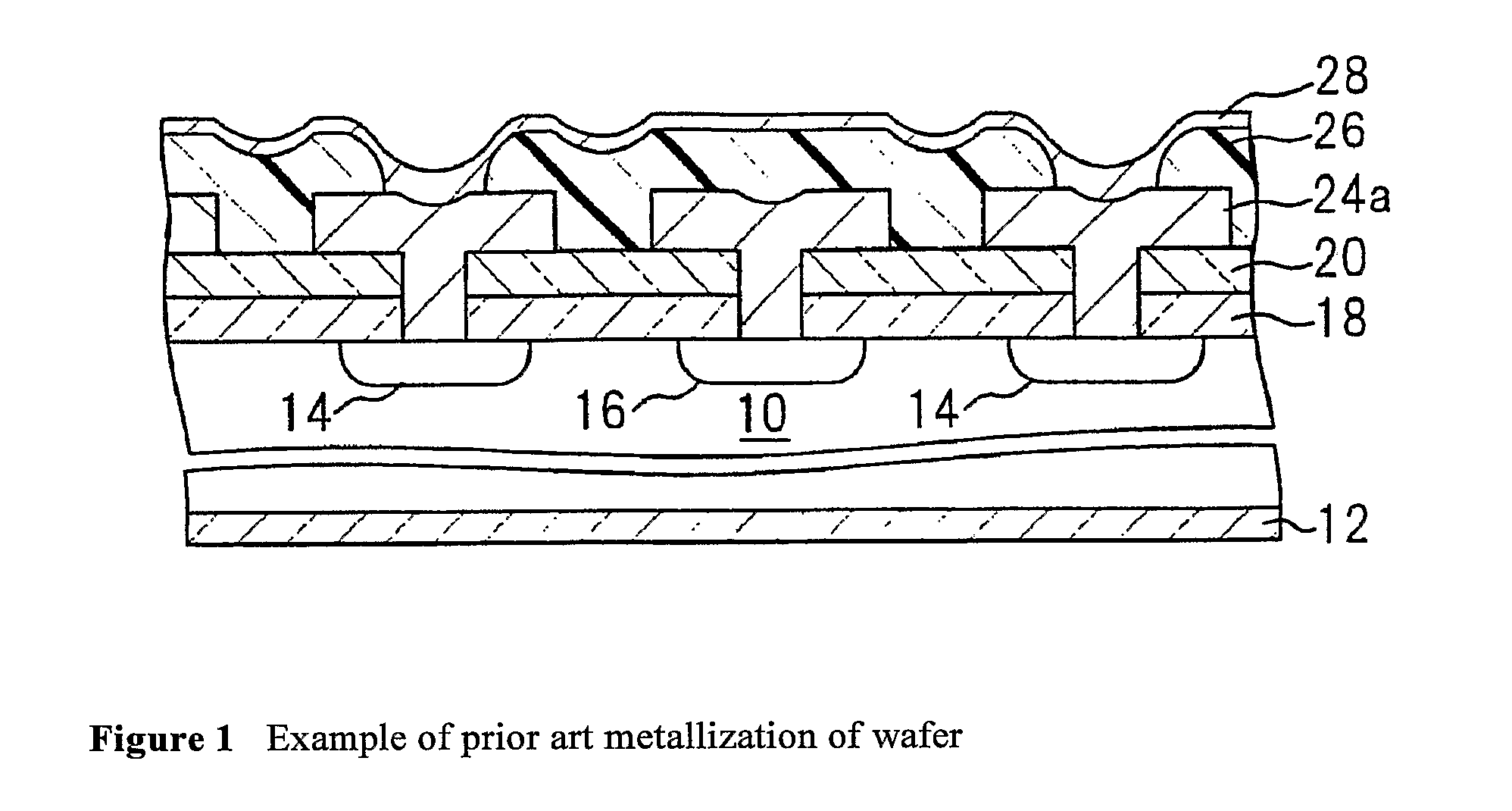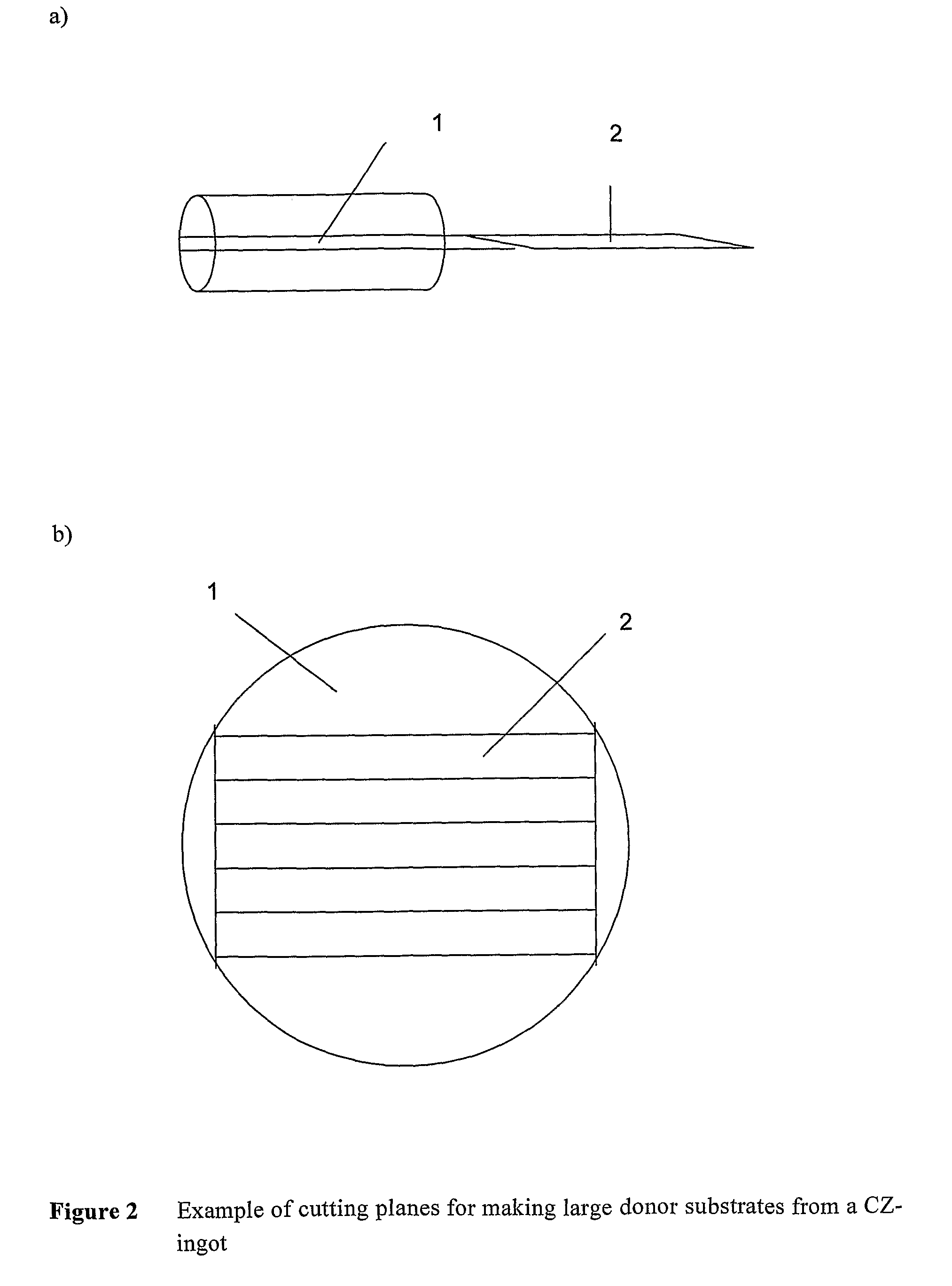Method for production of wafer based solar panels
a solar panel and wafer technology, applied in the field of wafer-based solar panel production, can solve the problems of unacceptable buckling/deformation, cell breakage, csg-technology is relatively low photovoltaic conversion efficiency of about 10%, and achieve the effect of low photovoltaic conversion efficiency
- Summary
- Abstract
- Description
- Claims
- Application Information
AI Technical Summary
Benefits of technology
Problems solved by technology
Method used
Image
Examples
example of an embodiment
OF THE INVENTION
[0055]The invention will now be described in greater detail by way of an example of an embodiment of the invention. This example should not be interpreted as a limitation of the general idea of combining the contacting and interconnecting of the solar cells for the entire module in one process step.
[0056]The example embodiment of the invention employs monocrystalline silicon wafers cut out from rectangular monocrystalline donor-substrates made by Czochralski (Cz)-grown ingots that are cut into thick donor substrates as shown in FIGS. 2a) and 2b). Each donor wafer is edge trimmed and planarized after cutting to form evenly sized and rectangularly shaped thick donor substrates. These give an advantage in that two or more donor substrates may be processed simultaneously for formation of monocrystalline silicon wafers with similar dimensions and even rectangular shapes. Thus the formed wafers may be laid adjacent to each other in a regular pattern on the front glass with...
PUM
 Login to View More
Login to View More Abstract
Description
Claims
Application Information
 Login to View More
Login to View More - R&D
- Intellectual Property
- Life Sciences
- Materials
- Tech Scout
- Unparalleled Data Quality
- Higher Quality Content
- 60% Fewer Hallucinations
Browse by: Latest US Patents, China's latest patents, Technical Efficacy Thesaurus, Application Domain, Technology Topic, Popular Technical Reports.
© 2025 PatSnap. All rights reserved.Legal|Privacy policy|Modern Slavery Act Transparency Statement|Sitemap|About US| Contact US: help@patsnap.com



